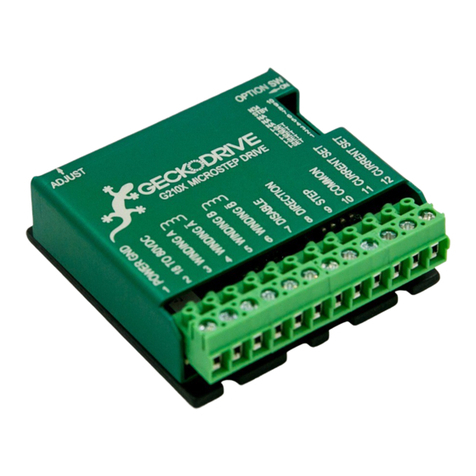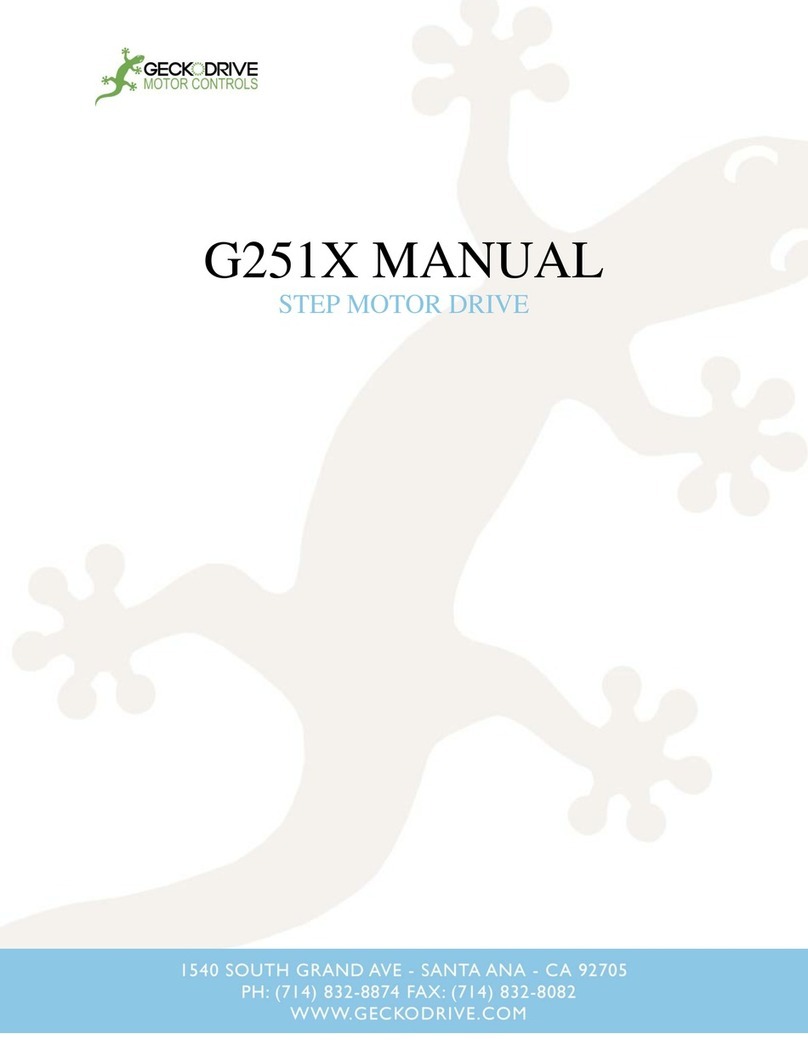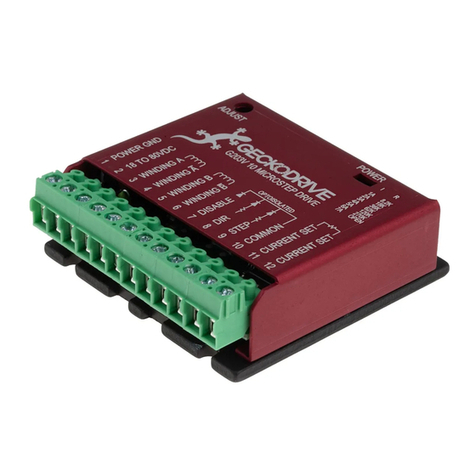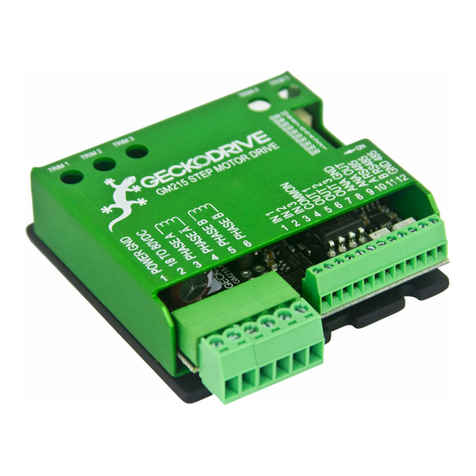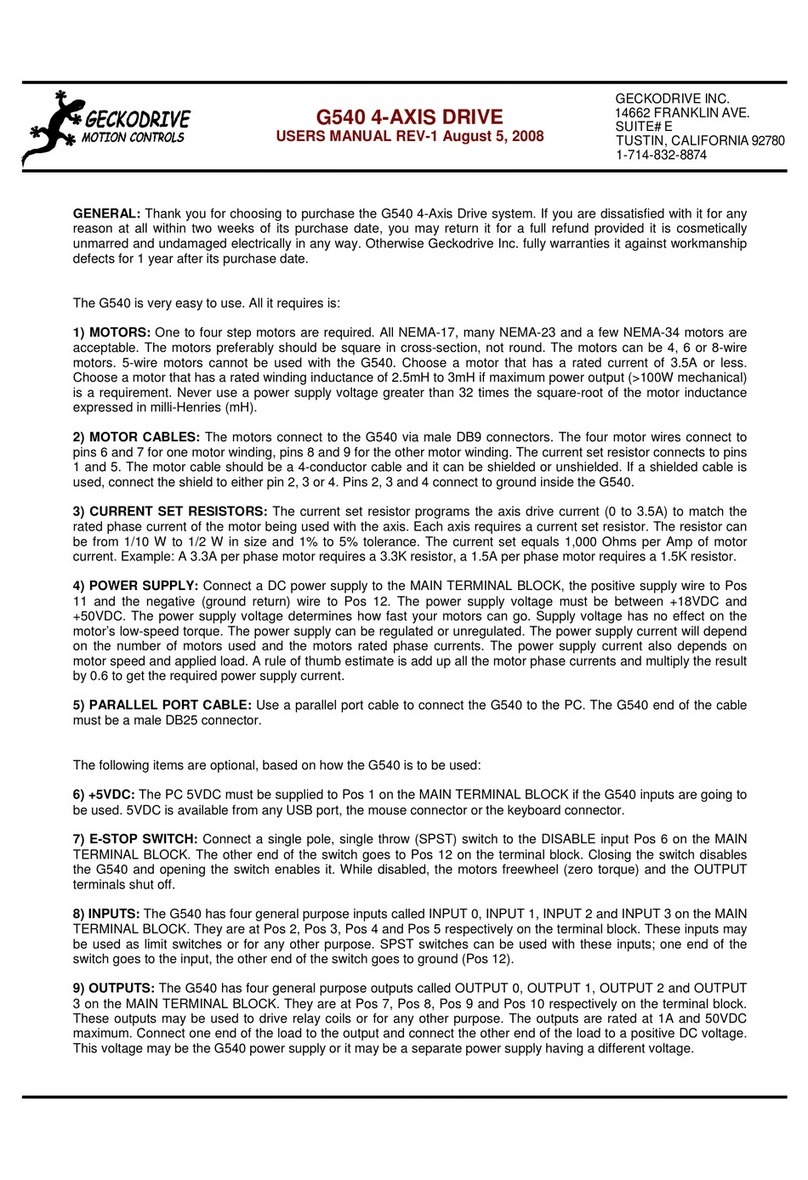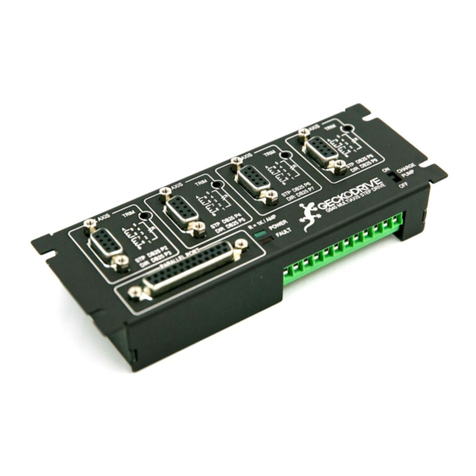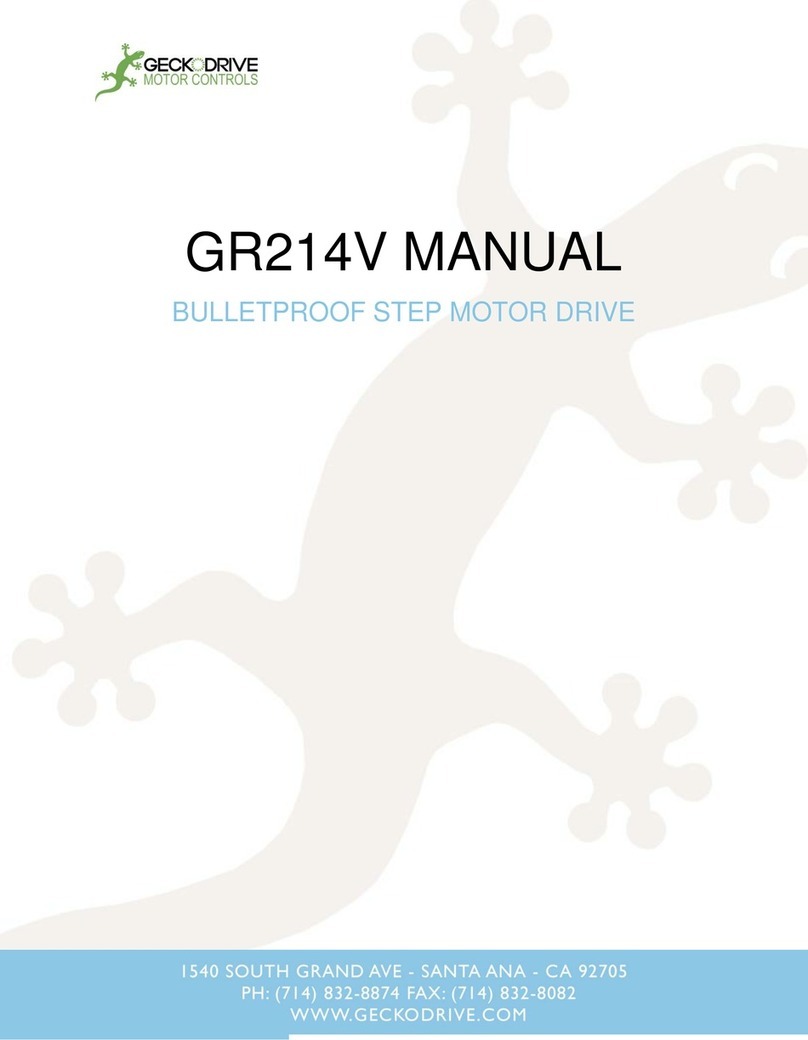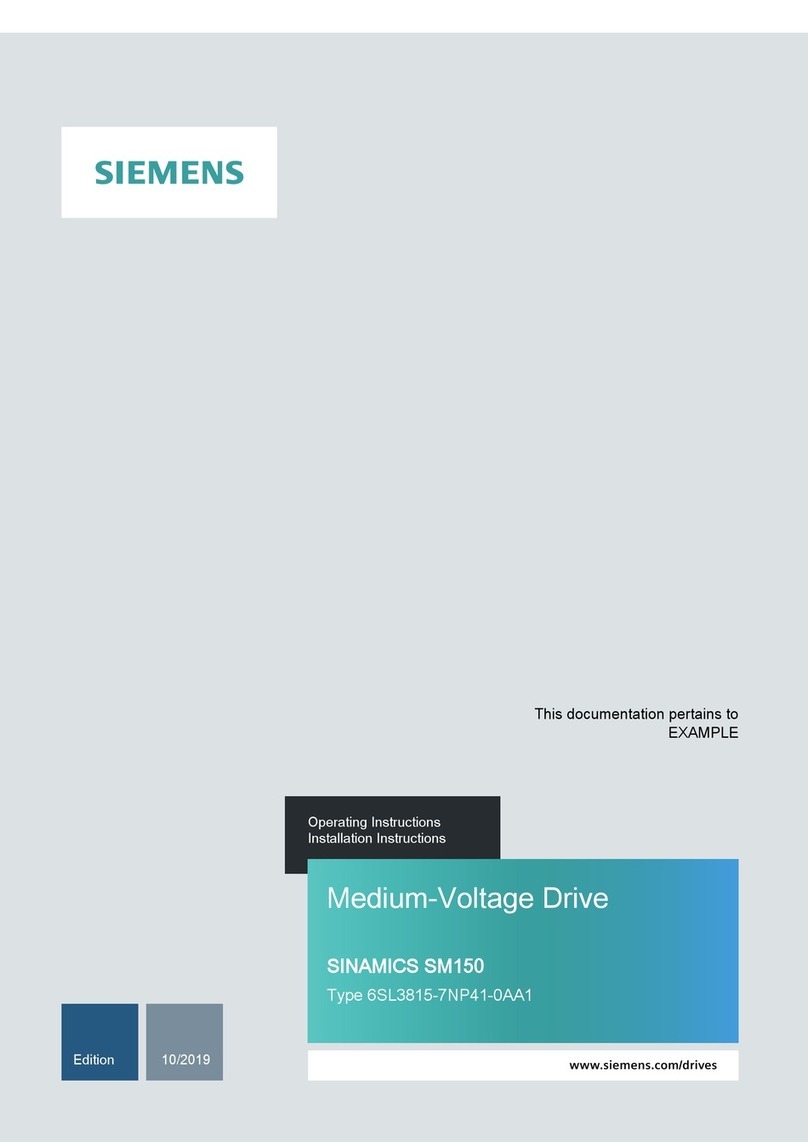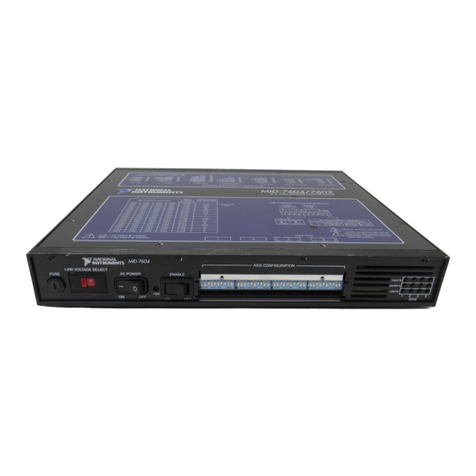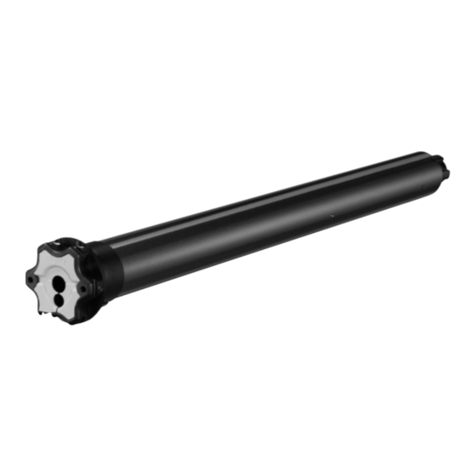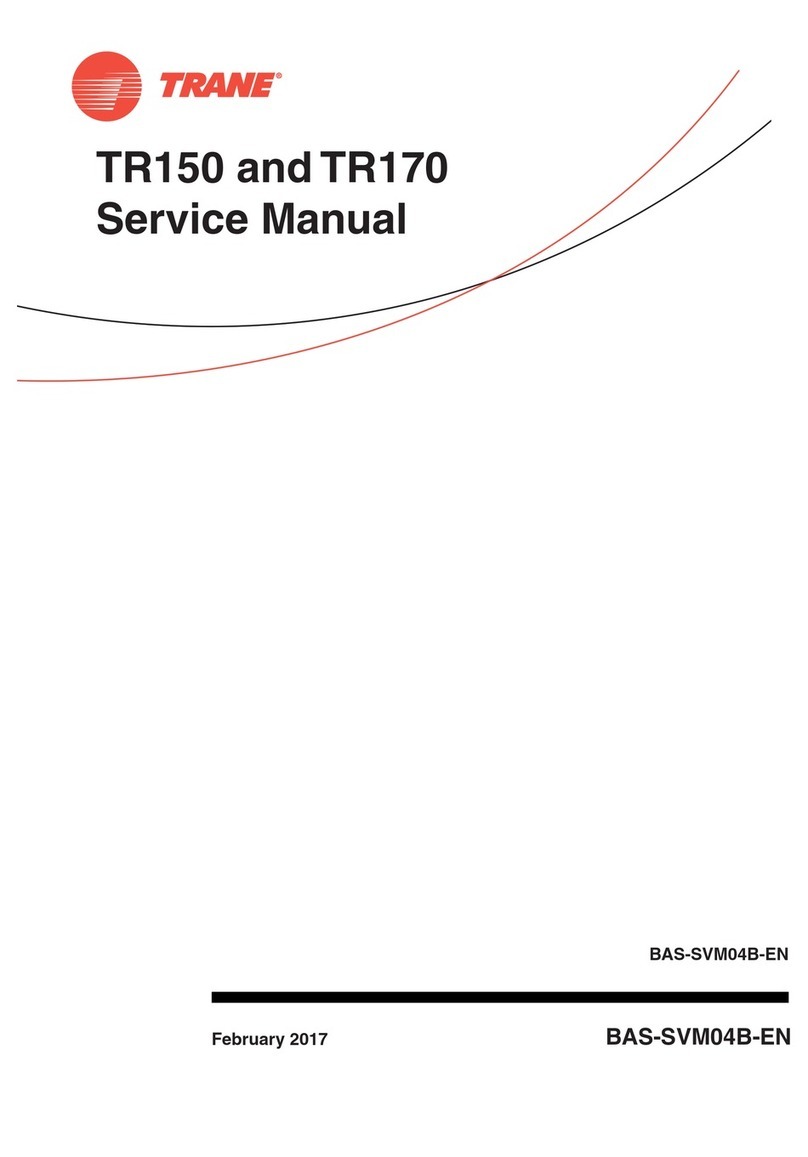
G320 BRUSH SERVO DRIVE
REV 7: July 15, 2010
for every encoder count the motor is ahead of the STEP pulses sent. The PID algorithm will force the motor to match the STEP input
over time and restore the POSITION ERROR voltage back to +5 VDC.
GAIN AND DAMPING:
GAIN and DAMPING settings generally track each other. If you increase GAIN (greater stiffness), then increased DAMPING is
needed as well to restore critical damping. Be careful, increasing GAIN without increasing DAMPING may cause the motor to break
out into violent oscillation.
The higher GAIN is set, the noisier the motor will be when stopped. This is because higher gain causes more vigorous dithering
between encoder counts at rest. There is a trade-off between high gain (high stiffness) on one hand and excessive dithering (noise
and motor heating) on the other. Use your best judgment here.
To see how your servo is compensated, it is first necessary to induce a disturbance. The easiest way is to switch the DIRECTION
input while commanding a constant speed via the STEP input. The abrupt direction change puts just the momentary load needed on
the motor while you watch how it responds.
If you are using an oscilloscope, use channel 1 on the test point and channel 2 on the DIRECTION input. Set the trigger to “normal”,
trigger source to channel 2 and trigger edge to “+”. You should see a single sweep for every clockwise change in direction.
Slowly increase STEP speed until you get a picture similar to one of the three above, and then do the following:
1) OVERDAMPED: Decrease DAMPING or increase GAIN
2) CRITICALLY DAMPED: Do nothing; you’re there
3) UNDERDAMPED: Decrease GAIN or increase DAMPING
CURRENT LIMIT:
The current LIMIT trimpot sets maximum current the motor is permitted to have. It is adjustable from 0 amps to 20 amps. Normally
the LIMIT trimpot is set to maximum (20 amps) unless you want to limit motor torque to a lower value.
Motor speed and position is unaffected by the current LIMIT setting unless the torque demand due to load exceeds this setting, then
the motor position will fall behind the command position because of insufficient torque.
FAULT INDICATOR:
The FAULT indicator is on while the drive is in power-on reset, the DISABLE input is held “low” or if the protection circuit is tripped
due to a fault condition. All power MOSFETs are turned off and all internal counters are reset. The FAULT condition lasts for 3
seconds, and then self-resets to try again. If the protection circuit tripped it and the cause is not cleared, then it will immediately re-
enter the FAULT state again and repeat the cycle.
There are two conditions that will trip the protection circuit. One condition is if a short-circuit occurs and current exceeds 20 amps.
The other condition is if the POSITION ERROR exceeds +/- 128 counts causing a break of the servo-lock. This condition can have
several causes:
1) The loop settings are severely under-damped and the motor breaks out into oscillation.
2) Excessive motor load due to acceleration or workload.
3) The speed command in excess of what the motor can deliver.
4) The current LIMIT is set too low.
5) The power supply current is insufficient for the demand.
6) The motor is wired backwards, is broken or disconnected.
7) Encoder failure.
REVERSING DEFAULT MOTOR DIRECTION:
The G320 will turn the motor in the CW direction when the DIRECTION input is “high” (logical “1”, or +5VDC). If instead CCW is
preferred, then:
1) Reverse the motor “+” and “-“ leads (TERMINAL 3 with TERMINAL 4)
2) Reverse the encoder “channel A” and “channel B” leads (TERMINAL 8 with TERMINAL 9)
TERMINAL 5 ERR / RES

